What are the statuettes and which one to choose?
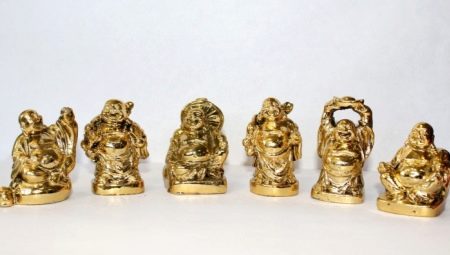
The desire to equip your home, make it more comfortable and show individuality even in everyday life - all this has been characteristic of humanity for more than one millennium. One way to decorate a space is to fill it with small decorations, including figurines. They can be purchased indiscriminately, you can take the ones you like to match the walls or, conversely, according to the principle of contrast, or you can collect them.
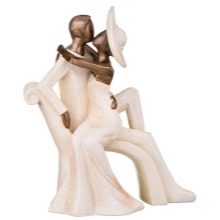
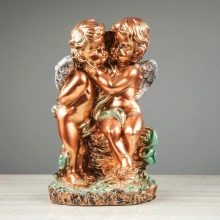
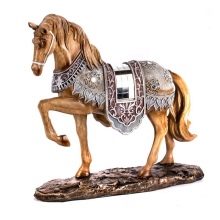
What it is?
The statuette is something that may have appeared even before the painting of the walls of the caves. This is exactly how, many scientists are sure, and it was - first, figurines appeared in the dwellings of ancient people. Of course, they were objects of worship that were used in rituals and ceremonies. They symbolized the elements, natural phenomena, became objects of worship and were models that personified the first attempts to comprehend the universe. They also showed the formation of abstract thinking: the transfer of the symbolism of natural forces to objects, etc.


In Ancient Egypt, the mystical and ritual essence of the figurines only grew, and in Hellas it was already saturated not so much with symbolism as with aestheticism. And in the Baroque era, the fashion for figurines that decorate the house reached its peak. Sculpture has become equal in importance to painting and architecture and therefore has attracted such attention. The figurines could become copies of the legendary sculptures, which means that they got enough of this attention. Times changed, fashion, epochs, styles - and the figurines did not leave the homes of those who sought to make life more beautiful.

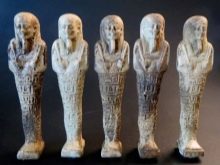
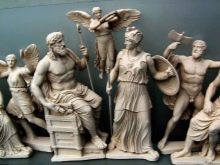
Even today they live in dwellings, sometimes inconspicuous, modestly gathering dust on the shelf, and sometimes - decisively conquering space accents. They broadcast information about the owner, show his tastes, interests, aesthetic preferences. They also create the mood at home, well, or emphasize what has already been set.
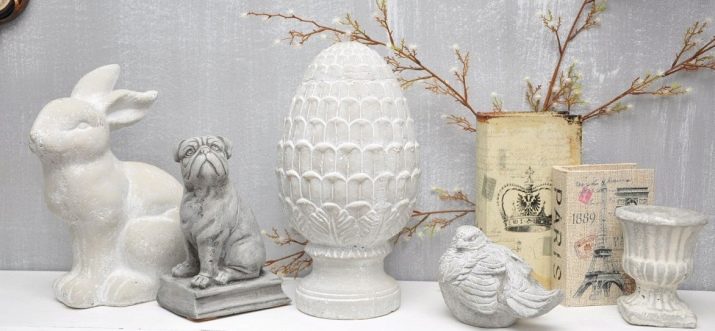
Today it is fashionable to collect statuettes of the Soviet era, in whose images were layered both childhood and pseudo-memories (this is when you did not live at that time, but many films watched give the impression of a contemporary of events). These retro and sometimes vintage pieces have a soul that is felt and therefore pleases the owner. They complement the look of the room, become its integral part, which is why the fascination with figurines promises to be with humanity for a long time.
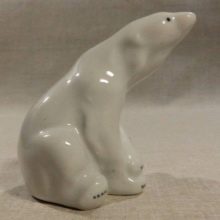
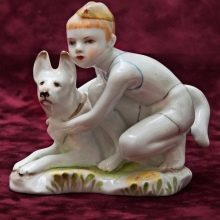
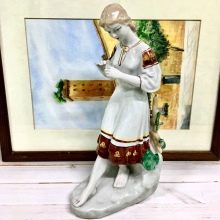
Species overview
It is very difficult not to get lost in this abundance of figures, therefore a small educational and cultural route, albeit in text form, will definitely not hurt to create.
Animals and Birds
Figures of birds and animals are in demand because they are universal - they look good in any room of the house: in the kitchen, in the living room, in the nursery, in the hallway.

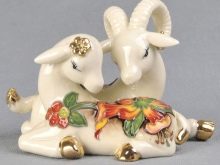
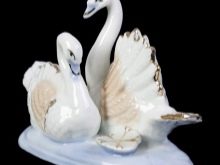
Let's find out what they mean.
- Dogs - loyalty, eternal friendship, devotion. Such figurines always fit well into the interior, because positive energy a priori emanates from them.
- Cats are more demanding images, they are not only about cute kittens and well-fed pussies - they are also about mysticism, about willfulness. An Egyptian cat will decorate a room with African motives, and an ethnic clay cat will suit a home where authenticity and connection with national culture are appreciated.
- Pig - a symbol of wealth and frugality, but by no means sloppiness.
- Elephant - many remember from their Soviet childhood a line of elephants in their grandmother's sideboard. The exotic animal seemed to be a messenger from an oriental fairy tale, kind and magical. And today, many people like to have an Indian elephant at home in the form of a figurine - the beauty and power of nature in its purest form.
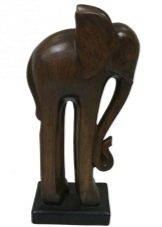
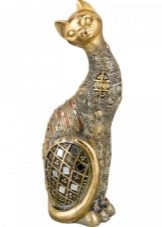
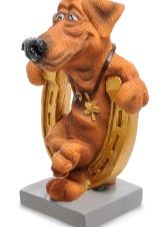

A fish figurine can mean the presence of a Christian symbol in the house, a hippopotamus - the charm of non-standard ideals, a scorpion - strength of character, pigeons - peacefulness, an eagle - a desire for high flight, and, for example, a sphinx - faith in mystical forces and a willingness to rely not only on the rational. People can choose figures subconsciously, without understanding possible interpretations, and this is an interesting psychological test for themselves.
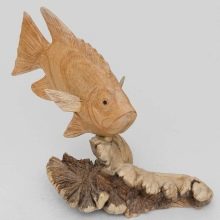
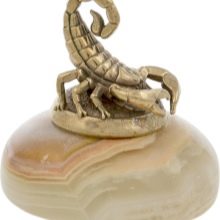
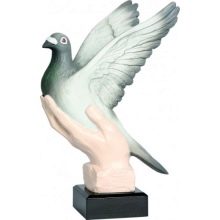
People and fairy creatures
Figurines depicting people can be even more interesting and expressive.
But you need to be careful with them - it would seem a small figure, but it significantly affects the atmosphere in the room, especially when these are three-dimensional images of not just historical figures, but personalities with contradictory, and even openly negative associations: Stalin, Dzerzhinsky or even Napoleon.

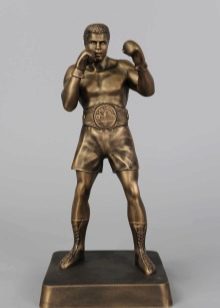
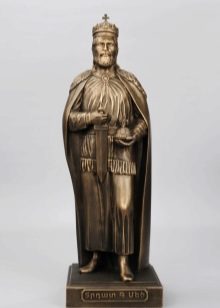
What figures are in great demand:
- children, little girls and boys - bring a mood of joy, kindness, purity;
- young girls are associated with romance and tenderness, bright dreams;
- married couples - become an expression of the desire for goodness and harmony in a single family (like a couple of lovers, for example);
- old man - is present in a house where wisdom and experience are respected;
- a woman representing a particular profession (dancer, for example) - ideals, beautiful symbols that give rise to nostalgic or other warm feelings;
- angels - keepers of an immortal soul, light and good;
- gnomes - they say that these fantasy creatures help to improve the financial situation in the family;
- elves and fairies - also attract happiness to the house, contribute to pleasant changes, maintain faith in a miracle;
- Nutcracker, Snowman, Snow Maiden - New Year's symbols become a joyful seasonal decor that will long be associated with holiday traditions in this particular family (which, for example, is very valuable for growing children);
- African woman or the head of Nefertiti - any such exotic figurines are associated with female sensuality and the magic of female charms;
- hand - an elegant handle can be not just a figurine, but a holder of jewelry;
- a stylized image of a person in the form of a figurine - can express the original author's intention, give rise to pleasant associations, often understandable only to the owner.
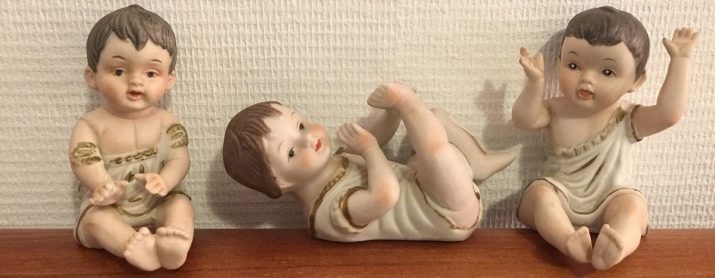
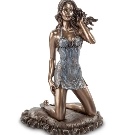
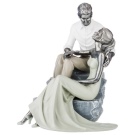
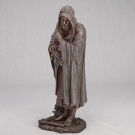

There are a lot of variations of these directions, and such figurines are one of the most interesting for collecting. It is pleasant to give them, for example, to a girl who is beginning to practice dancing to present an elegant statuette of a ballerina, and to a married couple on their wedding anniversary - original figurines of lovers.
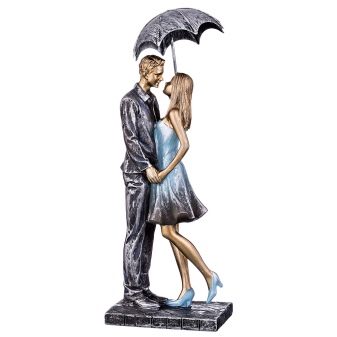
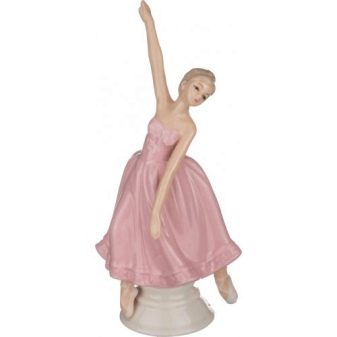
Deities
The Anubis figurine is a visualization of ancient Egyptian ideas about the mystical underworld. That is why not everyone is disposed to such figures at home, endowing them with negative energy that attracts terrible things. But if you treat an attractive image (and it looks impressive) as an artifact or a symbol of the beauty of art, which is more than one millennium old, you don't have to think about the negative.
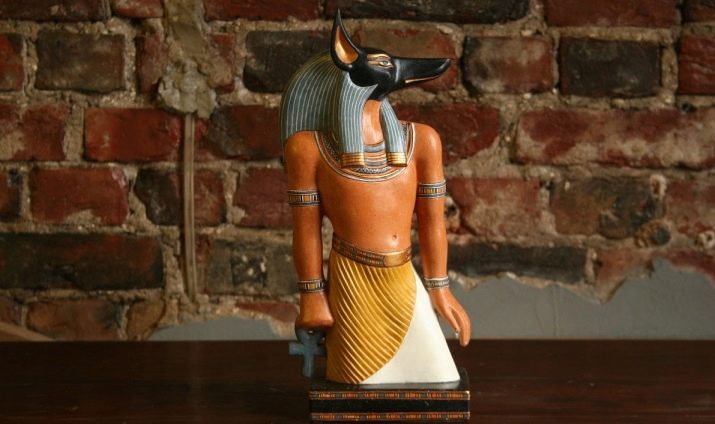
Of no less interest is the Shiva statuette: a Hindu deity, both a formidable god and a kind protector. Lakshmi, on the other hand, is a goddess who attracts good luck and material wealth, which makes her figurine especially popular in the category of gods. And the statuette of Ganesha represents an Indian deity that promises wealth, wisdom and prosperity.
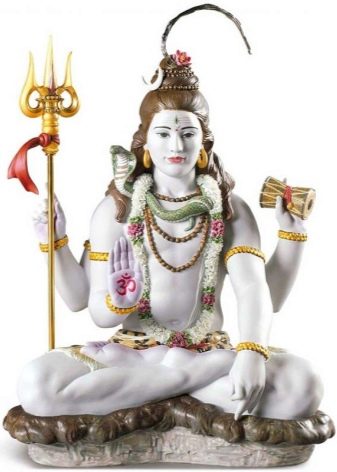
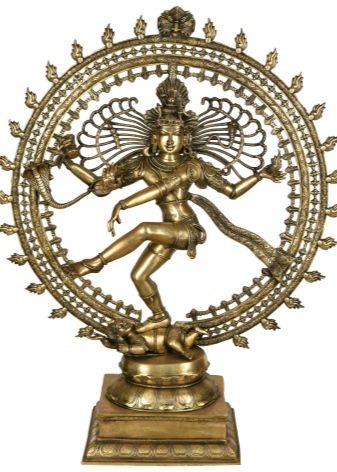
Since primitive times, when the Venus of the Paleolithic first appeared, mankind has strived to create visually perfect symbols. And is it possible to ridicule the primitive aspirations of the ancient people, who consider these statuettes to be objects of worship, because many people today, without realizing themselves, associate their dreams and expectations with their home decorative figurines.
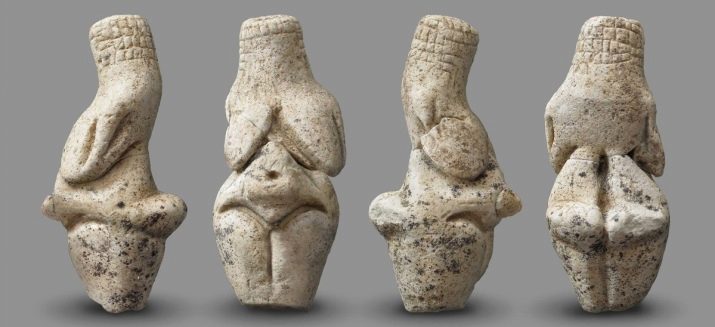
Other
A clown figurine can become an association with a good yearning for childhood, and a figurine depicting the Eiffel Tower - with a declaration of love to the heart of Paris. Figures of the signs of the zodiacal circle (Sagittarius, Gemini, Virgo and everyone else) often appear in the house as a birthday present.

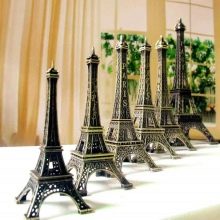
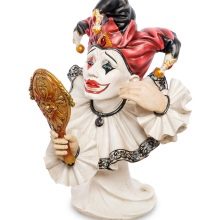
And such nostalgically pleasant things, for example, the Olympic bear, are already history, and a symbol of a generation, and just a cute warm little thing at home that people of different ages will want to take in their hands. The malachite box is a recognizable statuette, a symbol of magic and part of the cultural code in a sense. And this list can be very long, because the ideas that come to the mind of the author of the statuettes are limited only by his imagination.
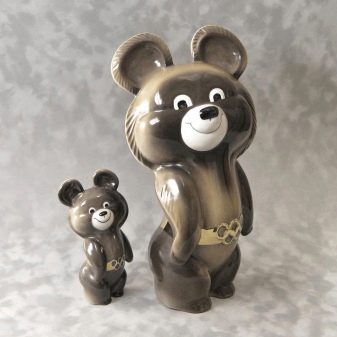
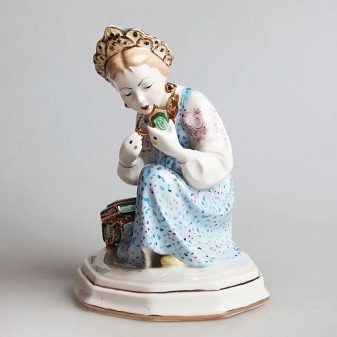
Materials (edit)
Materials range from cheap plaster to precious metals, porcelain, crystal, etc. Cheap figurines are made of plastic, plaster, craftsmen use artificial stone, as well as natural marble. Expensive figurines are silver, gold, jade, crystal. Budget options can be earthenware and ceramic, clay, carved, they are actively made today from polymer clay. Massive cast-iron figurines are also found.
There are also combined products that combine wood and stone or precious metal and crystal, for example. In ceramic products there may be metal or wooden inserts, and possibly plastic ones, imitating expensive amber.
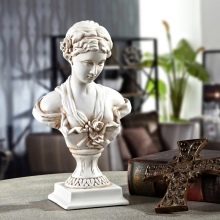
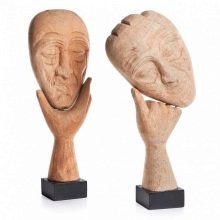
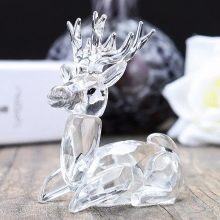
Style directions
Each figurine has its own interior style. This rule may sound very strict, but this approach makes sense. For example, it is unlikely that an African wooden giraffe will suit a Provencal interior, and a Japanese doll will become its own in a rustic style. Likewise, Chinese porcelain figurines will not get along in the authenticity of country-style, and Egyptian cats will not become a continuation of Soviet retro.
Unusual combinations are possible, but you need to have knowledge and, what is more important, intuition of a designer, in order to put together things from “different” operas in one space. In the white aesthetics of scandi, it is perhaps easier to do this: light walls are that blank sheet, an ideal background, bright colors on which the decor will play. It can be an authentic Dal Carlian horse, a well-known symbol of Sweden, or it can be a Russian nesting doll, if the Scandi is adapted to this.
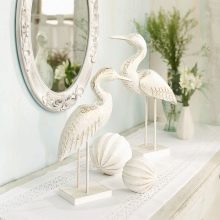
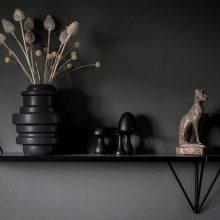
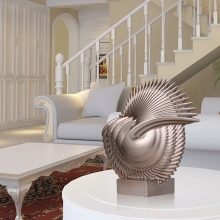
The most expensive figurines in the world
Damian Hirst's sculpture "For the love of God" is worth 100 million dollars, it was made from 2 kg of platinum in 2007. This is a copy of the skull of a European from the 18th century, slightly reduced. Interestingly, the sculpture's teeth are real, human. This is the choice of the art world, in which such and even more unexpected and even contradictory sculptures are incredibly in demand.

Significantly less, but still almost 60 million dollars worth 65-centimeter sculpture "Head" by Modigliani. It was executed between 1910-1912. and sold in 2010 at Christie's. Who bought the "Head" is unknown - the Italian who raised the price more than 10 times decided to remain anonymous. But "Lioness Guennola", whose height does not even reach 9 cm, was sold for 57, 1 million dollars in January 2007 at the Sotsbis auction. The main value of this statuette at its age: experts believe that it appeared no earlier than 2800 BC.
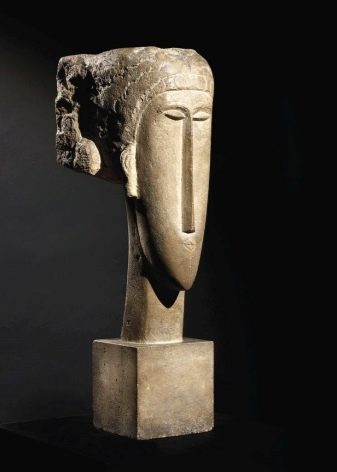
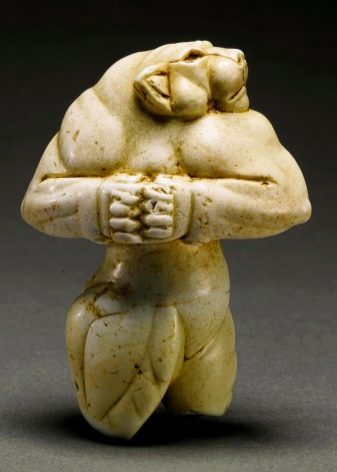
Of course, a few collectors can aim at such receipts in their collection. However, these are not just collections, they are investments in art. But you can think on a more modest scale, but also engage in investment collecting: even many statuettes of the Soviet era are more expensive today than 10 years ago, which means they will only gain in price. For example, at the Kiev EKHZ, a figurine "May Night" was produced - with a gentle pair of lovers Hanna and Levko. Today, such work is sold on the Internet (and also often by auction), and its price is more than affordable, but interest in such art objects is only growing.
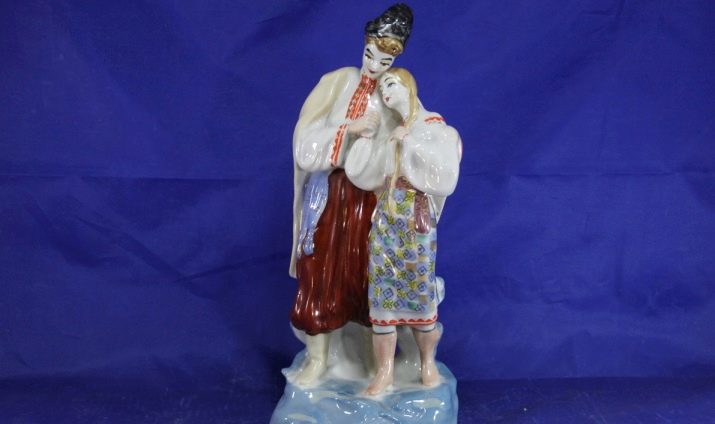
Great interest is also shown in the figurines of the Dulevo Porcelain Factory. Particularly impressive are the works from the Sculpture Restoration series, where Dulev's statuettes by famous masters who have already passed away are displayed. So, the recognizable sculpture "Above the Stream" by Malysheva will cost 25 thousand rubles, and the sculpture "Hamlet" by Brzhezitskaya - 80 thousand rubles, and the work of Gatilova "Five" - 65 thousand rubles.
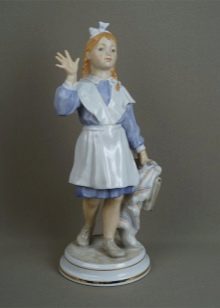


And if you take the works presented by the famous Lomonosov Porcelain Factory, the prices are impressive. So, the inkwell of Danko's "Fizkulturnitsa" starts at $ 7,000, while Papanin's on an Ice Floe, dedicated to the exploits of polar explorers, by the same author can reach $ 50,000.
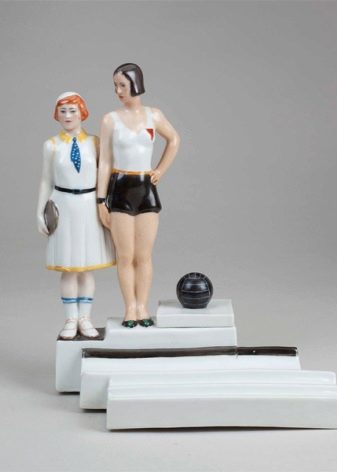
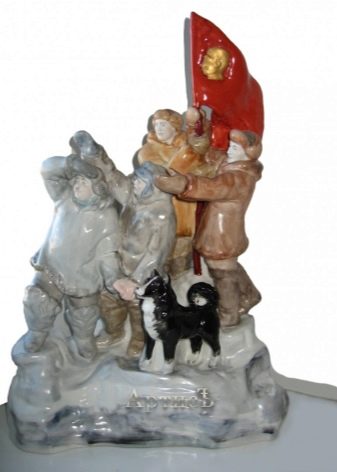
Selection Tips
The decorative elements in the house are not always chosen well: sometimes a small figurine makes a particular corner of the apartment, as if falling apart, awkward, tasteless. How not to make the wrong choice:
- stone figurines look noble, emphasize the status of the owners of the house, marble are considered the most demanded;
- metal figurines are universal, bronze ones will be combined with the classic style, also with modern, and minimalism and hi-tech require a shiny or matte chrome finish;
- figurines made of black metal (and even rusty) will be a good addition to the loft;
- faience, porcelain and clay are versatile materials for figurines, but they are more often found in classic interiors, as well as in retro-style rooms, Scandinavian kinfolk, “mid century”;
- plaster and alabaster figurines are inexpensive, and today they are considered a fashionable acquisition for a modern interior;
- wood is most suitable where there is ethnics in the design, or you want to emphasize ethnic accents in a neutral interior.
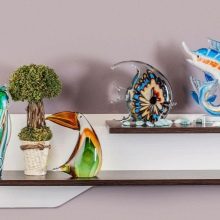
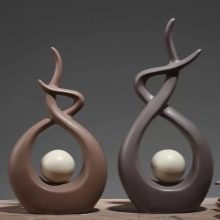
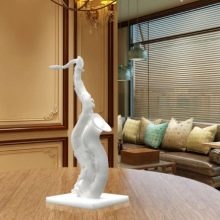
Matching the figurines is also important. The general style, theme, the absence of a pronounced stylistic conflict will make the interior convincing.
Many small figures can cause visual noise, so you need to carefully think about what and where will be.
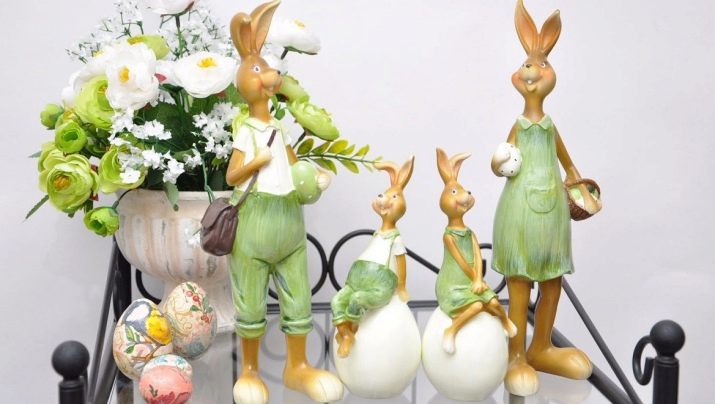
How to arrange?
The overall picture and the transformation of the interior, the expressiveness of this decision, depend on where the statuette will eventually stand. A fireplace is considered a wonderful place, it is often the center of the interior composition, therefore, attention to the figure will definitely be riveted. Figurines also look expressive on a dresser or table in the bedroom. Those who like to meet guests and create an impression of the house from the first step into it should think about a statuette in the hallway - perhaps it will be symbolic, and somehow reflect the interests and mood of the owners' house.
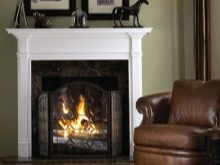
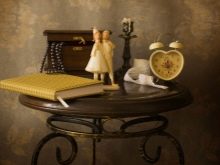
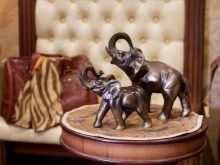
A great place for carved (and not only) small figures is a shelf in the kitchen above the table. Or, if there are no top cabinets in the kitchen, open shelves can also be sparingly decorated with modest figurines. It is not necessary that they be on a gastronomic theme, but it is important that they are pleasant and associated with something warm, joyful, evoking positive emotions.
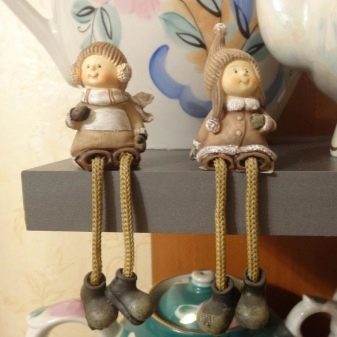
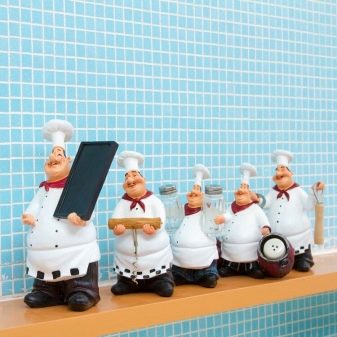
Beautiful examples in the interior
Better to see once than enjoy a detailed description.
12 inspiring examples of how figurines blend harmoniously into the interior and decorate it.
- This plaster bust gives both the aesthetics of aristocracy to the interior and lightness. Splashes of white in this room are successful, intersect with each other, create a stylish, verified interior.

- Such a zone in the hallway or corridor wonderfully sets the mood for the space, looks elegant, "tasty". And so here are two porcelain horses, light, cute and nicely settled in this cozy place.


- And here are the open shelves in the kitchen, where dishes peacefully coexist with decor, including modest but stylish figurines. It turned out to be a very beautiful, inspiring space, and nothing super complicated and expensive is used here.

- The Nordic, frosty room shows how to use decor without going beyond the line of moderation. The small figurine shelf looks very cute above the seating area.


- This is how the interior is transformed for the New Year holidays. The good thing about seasonal figurines is that, taking them out every year, the heart is filled with good emotions, joy and anticipation of the celebration.
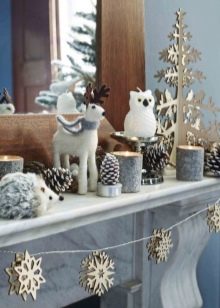


- Stylish fish in a stylish interior. Lovers of such solutions need expressive and, possibly, modern art objects that are easy to find at artisan festivals.


- Famous figurines "guarding" the bookshelves. And, indeed, this is where they belong.

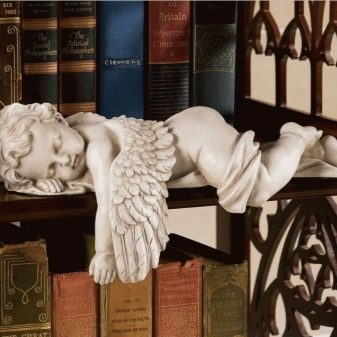
- An area in the lobby with a massive chest of drawers on legs and pastoral decor, where a black figurine of a bird fits very thinly.


- Shelves in a bright living room - this is a diagram of how to place the decor, where to put the figurines, and why a white background is so beneficial.


- A cozy corner with your favorite things - a horse, a zebra, and a cactus are very logical here. And although the figurines are different, not related to each other, they look good together.


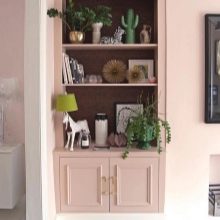
- A wonderful classic technique for decorating a living room with a library area, where there was a place for your favorite figurines. There is a lot of everything, but there is no visual noise, inappropriate and annoying. And all thanks to the harmonious arrangement and light background.

- And here everything is impeccably stylish, take it and copy it. Books and figurines are a sure recipe for beauty and persuasiveness in decor, but correct placement is also important.



What figurines can be placed in the house and what is their feng shui meaning, see the video.








